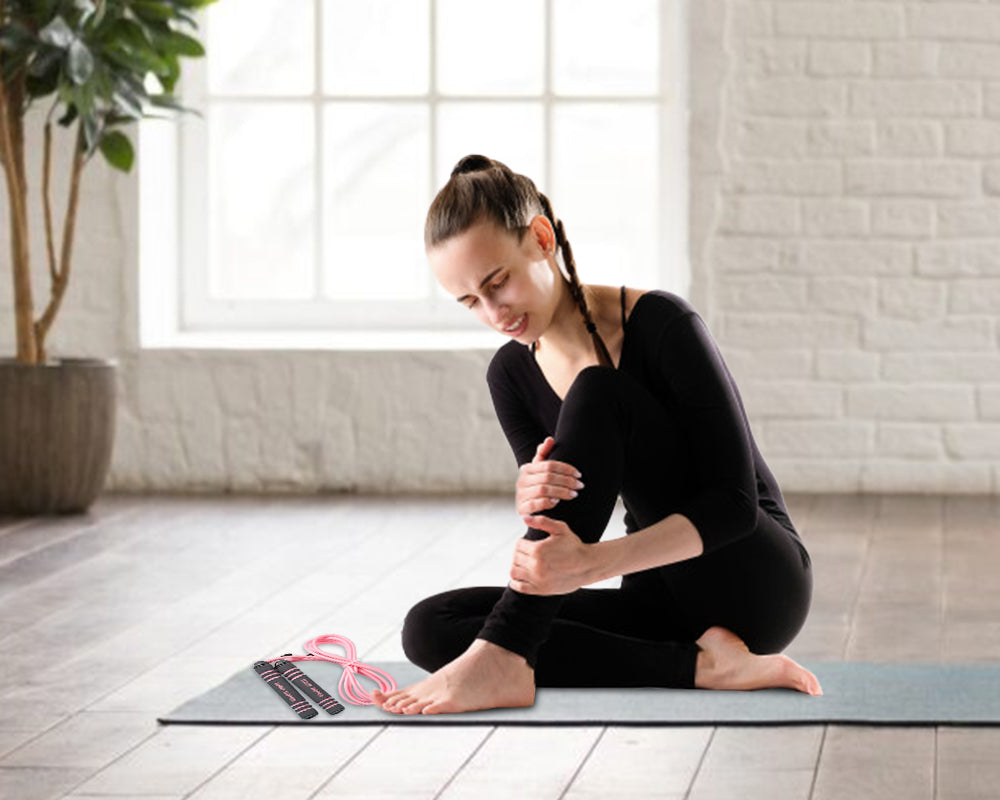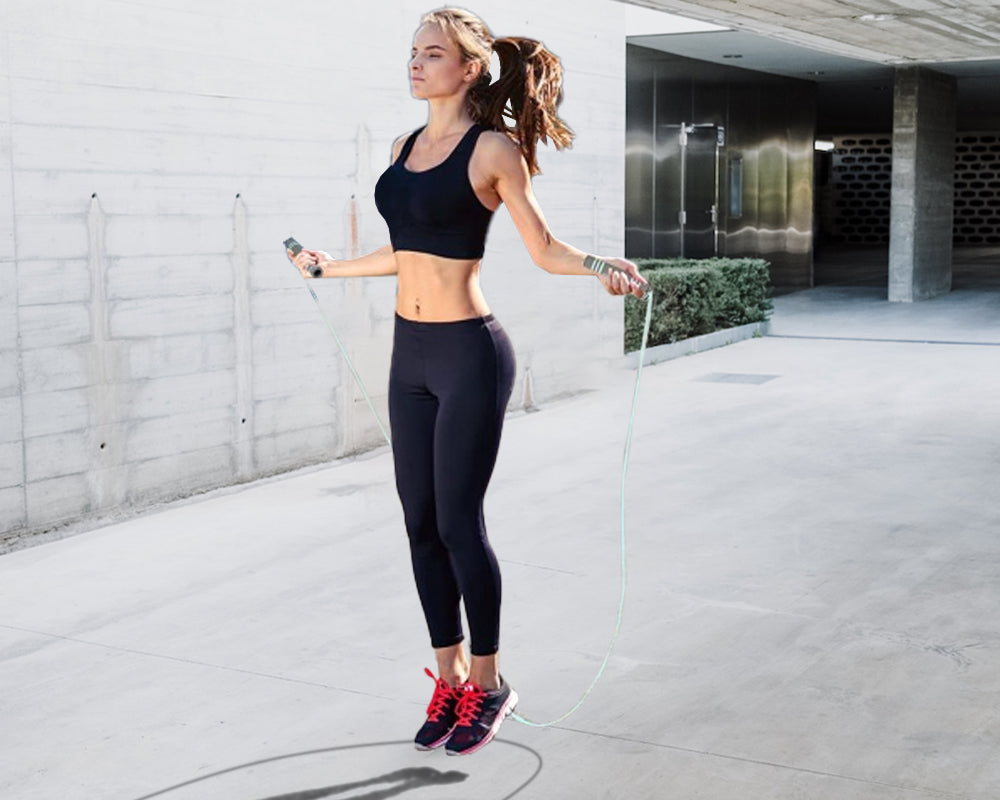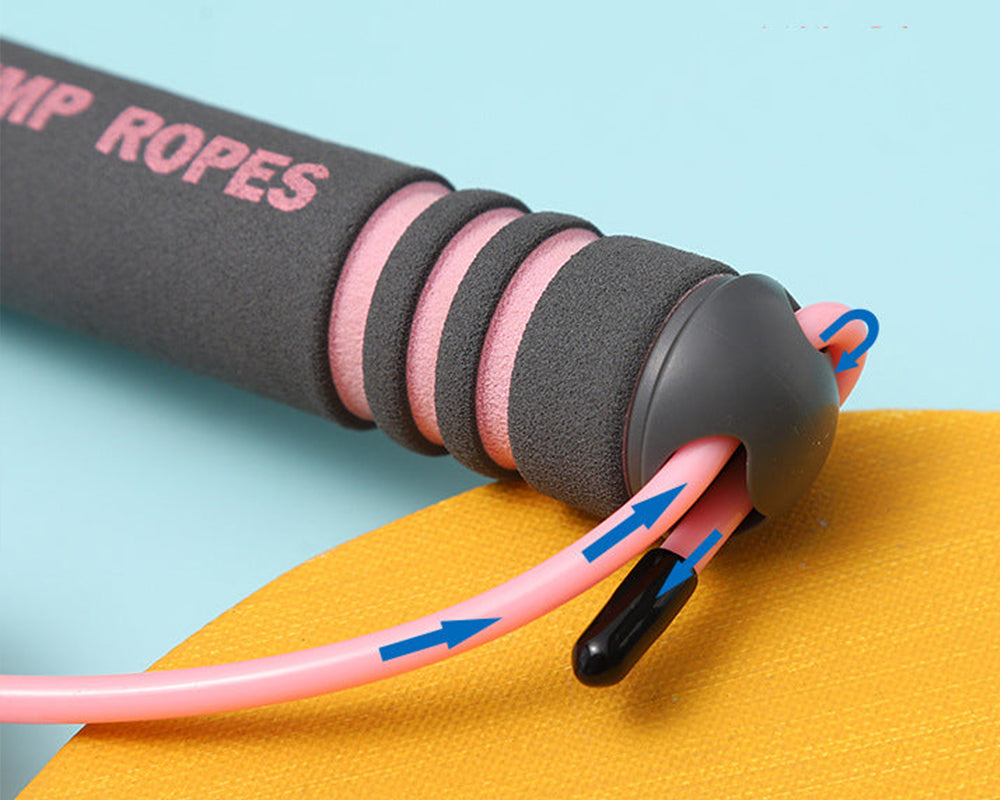Skipping is a total body workout that helps improve coordination, stamina and agility. If you jump rope for 10 minutes, you will get the same benefits as jogging for 30 minutes, running for 15 minutes or swimming for 12 minutes. Though jumping rope exercise is good for your health, occasionally there are common skipping injuries. We have all suffered different injuries in our exercise routines. There are several ways to avoid skipping injuries. But first, let's look at some of the most common skipping injuries you may suffer.

Common injuries:
The following are some of the most common injuries that can result from skipping exercise.
“Shin splints” refers to pain that occurs along the shin bone (tibia), and is formally known as “medial tibial stress syndrome.” Common symptoms include tenderness and soreness along your shinbone and mild swelling in your lower leg. Often, poor posture and technique, combined with excessive jumping, are the most common causes of shin splints.
Calf strain
Calf strain is one of the common skipping injuries. Typical symptoms include calf pain, swelling and a significant reduction in range of motion. Most of the time, this type of injury is caused by working out too quickly without a proper warm-up. This is especially true when jumping rope, as your legs tend to move quickly and forcefully and may overstretch if your calf muscles are not adequately prepared for the jump.
Ankle sprain
Sometimes, when you jump rope, you have no control over the way your feet land on the ground. This can cause your ankles to move out of their normal position. This can cause your ankle ligaments to be stretched and torn. Ankle pain in general is often caused by inadequate warm-ups. Poorly fitting shoes and jumping or exercising on hard surfaces can also lead to ankle pain.
Patellar tendonitis
Patellar tendonitis is another common injury that we see when jump the rope. It is usually caused by excessive jumping and running and can be exacerbated by poor posture while performing these two sports. When the quadriceps muscle pulls down on the kneecap, this causes the patellar tendon to become inflamed and degenerate. This is an "overuse" injury.
The fourth common type of skipping injury is the heel spur. Generally, you will not experience a heel spur immediately, but rather it will build up over time as you perform your skipping workout. Skipping on a hard or irregular surface can cause heel spurs. You may also experience this injury when you try to wear ill-fitting shoes.

How to prevent skipping rope injury:
Now that you are familiar with some of the most common injuries that can occur while skipping, it’s time to look at how you can avoid them!
Wear the right shoes
Your shoes are important during exercise. If you feel uncomfortable before you start your workout, you should change it. Forcing exercise with uncomfortable shoes is dangerous. So, pick yourself a pair of well-fitting, shock-absorbing running shoes, they should also cushion your feet and support your ankles.
Get a good quality rope
Having the correct type of rope is very important. For the length of the rope, first, step on the middle of the rope and then pull it straight. Excluding the handle, the rope should reach your armpits. This will be the ideal length of your rope. If it is too long, you may get tripped on it and eventually get hurt. You should give preference to adjustable length jump rope; you can adjust the length of the rope at the handles on both sides to shorten it. At the same time, the handle of the rope should not be too light or too heavy. On armadadeals, you can easily find jump ropes of that type.

Be sure to warm up
Doing a warm-up before skipping is very useful. It helps prepare your joints for the jumps you are about to make. Warming up will increase the flow of blood to the muscles used. This will help the muscles to get oxygen efficiently, which will also reduce the chances of soreness afterwards.
Master jump height
You don't have to jump too high from the ground. The jumping height should not be more than 1/2 to 1 inch from the ground. Taking a big reap will decrease the impact and reduce your speed. Also, when jumping the rope always keep your legs together and knees slightly bent.
Choose the right surface
The wrong surface is a common cause of injury. For your safety, try to find a level and hard surface. You should avoid carpets, grass and concrete floors to name a few. They require you to jump high, put you at risk of injury, and can even make you more likely to trip and fall. If you can't get a good surface, we recommend that you purchase a jump-rope mat. Jump-rope mats are portable. You can place one on any flat surface and jump away!
Proper landing
Always take it easy when landing while skipping. Hitting hard on the ball of your feet can cause ankle pain or injury. Also, you can bend your knees slightly as you land on the floor. We seek to achieve the objective of being lighter and keeping shocks in check. To prevent skipping rope exercise injuries, make sure you land on the balls of your feet. This will reduce the stress on your joints, such as your knees and ankles, instead of landing with flat feet.
Jumping the rope is an effective form of exercise that can provide many benefits. However, one mistake can lead to multiple injury risks. The tips above provide information to help you avoid such skipping injuries.



